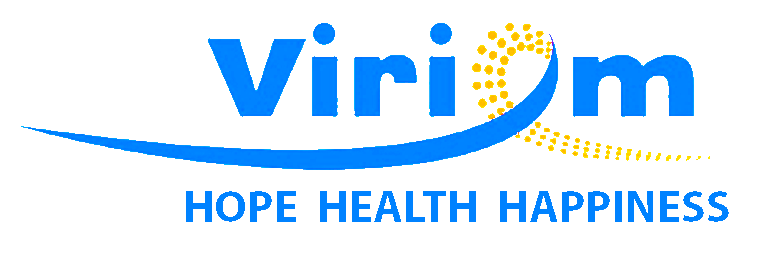San Diego, CA, May 4th, 2020 – Viriom, Inc. (Viriom) announced today the initiation of a Phase 2a study investigating the efficacy of an intramuscular long-acting injectable nanoformulation of VM1500A in HIV-infected patients.
The earlier findings of a Phase 1 study investigating safety and pharmacokinetics with single and multiple dosing of this formulation were presented at a poster session (Abstract 473 “Safety and PK Study of VM-1500A-LAI, a novel long-acting injectable therapy for HIV”) at CROI 2020 in Boston.
“We are delighted to report encouraging results of this proof of concept study exploring the potential of delivering therapeutic doses of VM1500A over 4 and 8-week periods,” said Dr. Iain Dukes, CEO of Viriom Inc. “Confirmed slow release with sustained therapeutic concentration levels allow us to capture the potential of VM1500A for HIV-1 long acting therapy and pre-exposure prophylaxis (PrEP).”
Viriom is conducting a broad development program to evaluate the potential of elsulfavirine/VM1500A for the treatment and prevention of HIV-1 infection. A 20mg daily capsule formulation of elsulfavirine – an orally available prodrug of VM1500A - is approved in Russia (Elpida®) and Eurasian Economic Union for the treatment of HIV1 infection in combination with other antiretrovirals. The high efficacy and safety as well as the unique PK properties of the compound enabled the development of the leading programs of a once-weekly oral formulation and a once-monthly or less frequent intramuscular injection for treatment of HIV-1 infection. The initiated randomized Phase 2a study aims to select a therapeutic dose and assess safety and efficacy of VM-1500A-LAI multiple injections in HIV-positive virally suppressed patients comparing to a marketed Elpida®-based once-daily regimen. The Data Safety and Monitoring Board (DSMB) will select one of three dosing regimens assessed within the study for further development.
Considering the successful results in the Phase I study and advantageous distribution in lymphoid and epithelial tissues, Viriom is exploring options for PrEP, including low-frequency dosing with oral and parenteral formulations.
Phase 1 VM-1500A-LAI nanoformulation single and multiple ascending dose study results
The Phase 1 open-label study evaluated the safety, tolerability and pharmacokinetics of VM1500A administered intramuscularly, in healthy adult volunteers. Participants were randomized to receive a single intramuscular injection containing VM1500A at doses of 150 mg (n=3), 300 mg (n=6), 600 mg (n=6), 1200 mg (double injection of 600mg, n=6) or multiple injections of 600 mg (two double injections of 300mg, n=6). After a single 4 weeks injection, participants were evaluated for a further week. Participants receiving multiple injections of 600 mg (double injections of 300mg, n=6) received two double injections containing VM1500A at doses 300 mg (n=6) every 4 weeks. After the second double injection participants were evaluated for a further week.
Single dosing of double injection of 300mg (n=6) and single dosing of double injection of 600mg (n=6) as well as multiple dosing of double injection of 300mg (n=6) resulted in plasma concentrations of VM1500A, that remained above the therapeutic pharmacokinetic threshold, established in previous Phase 2 and Phase 3 studies of VM1500A pro-drug administered orally once a day to HIV positive patients for 96 weeks. Based on subsequent modeling, the IM double injection of 300mg of VM1500A was estimated to deliver levels well above the threshold at the 4th week of a single dose and at the 8th week of multiple doses (and even beyond), providing early evidence for its potential as a longer than once monthly injectable. The results of the study also indicate that control of intracellular concentrations can be managed by varying the VM1500A loading in the nanoformulation and volume of an IM injection.
There were no discontinuations due to adverse events (AE) and no severe drug related AEs reported. All drug-associated AEs were assessed to be mild or moderate in severity. No systemic drug associated effects were noted.
About VM1500A and its pro-drug elsulfavirine:
VM1500A is Viriom’s investigational non-nucleoside reverse transcriptase inhibitor (NNRTi) currently being evaluated in clinical trials for the treatment of HIV-1 infection in combination with other antiretrovirals, as well as for pre-exposure prophylaxis (PrEP) of HIV-1 infection as a single investigational agent, across a variety of formulations. Elsulfavirine the pro-drug of VM1500A, is currently being marketed for the treatment of HIV-1 infection in combination with other antiretrovirals in oral 20mg once daily capsule formulation. Elsulfavirine is also being evaluated for the treatment of COVID-19 infection as an oral, once daily tablet.
About Viriom:
Viriom (San Diego, CA) focuses on the treatment, prophylaxis, and eradication of infectious diseases globally. Viriom is developing and commercializing the most innovative and affordable solutions to radically expand global access to the best antiviral treatments. Viriom's broad, proprietary, and partnered pipeline covers therapeutic, prophylactic, and curative medicines for HIV, viral hepatitis and respiratory infections. Learn more at www.viriom.com.
Forward-Looking Statement of Viriom, Inc., San Diego, CA USA
This press release includes forward-looking statements, that are subject to risks, uncertainties and other factors, including the possibility of unfavorable results from clinical trials involving VM1500A and elsulfavirine and the possibility that we may be unable to complete one or more of such trials in the currently anticipated timelines or at all. Further, it is possible that Viriom may make a strategic decision to discontinue development of VM1500A and elsulfavirine for any of their intended and explored indications. All statements other than statements of historical fact are statements that could be deemed forward-looking statements. These risks, uncertainties and other factors could cause actual results to differ materially from those referred to in the forward-looking statements. The reader is cautioned not to rely on these forward-looking statements. All forward-looking statements are based on information currently available to Viriom, and Viriom assumes no obligation to update any such forward-looking statements.
Media Contacts:
Iain Dukes, DPhil, idukes@viriom.com
